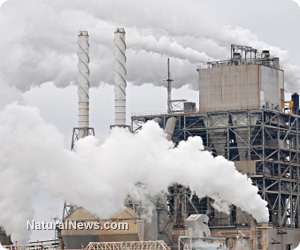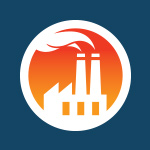Heavy metal tungsten linked to leukemia clusters in children
 Tuesday, March 04, 2014 Tuesday, March 04, 2014by Mike Adams, the Health Ranger Editor of NaturalNews.com (See all articles...) Tags: tungsten, leukemia clusters, rice protein |

(NaturalNews) "Scientists studying childhood leukemia cases in Arizona and Nevada say their research shows a possible link between tungsten and the disease," reported Fox News in 2009. The article is about the discovery of "childhood leukemia clusters" in Sierra Vista, Arizona and Fallon, Nevada.
An industrial operation there, it turns out, was emitting large amounts of tungsten into the air in Fallon, causing environmental levels of the heavy metal to rise substantially. As Science Daily reports:
The amount of tungsten in tree rings from Fallon quadrupled between 1990 and 2002, whereas the amount in tree rings from nearby towns remained the same, according to a research team led by Paul R. Sheppard of The University of Arizona's Laboratory of Tree-Ring Research.
That same article goes on to report, "Since 1997, 17 cases of childhood leukemia have been diagnosed in children who lived in the Fallon area for some time prior to diagnosis. Fallon's high incidence of leukemia has been acknowledged as a leukemia cluster by the Nevada State Health Division."
Just as importantly, it also mentions the conclusion of a 2003 HHS report which investigated the causes of the leukemia cluster. That report named the heavy metal tungsten as "a contaminant of concern because it was elevated in urine samples" of Fallon-are residents.
The tungsten in Fallon was coming from nearby tungsten mines and a "tungsten carbide processing operation" which manufactured tungsten-based products for machinery and tools.
Health Ranger finds over 10 ppm tungsten in popular rice protein superfoods
As many Natural News already know, I was the first food researcher in the world to identify the heavy metal tungsten in popular rice protein products sold on the shelves right now at Whole Foods, Amazon.com and other retailers of natural products.The following chart shows a summary of my findings, revealing levels from 2 - 10 ppm of tungsten in popular rice proteins purchased in late 2013 and early 2014: (SOURCE)

This tungsten, I later found, seems to be only found in rice protein and not pea protein, hemp protein, whey protein, sacha inchi protein or nut proteins that we tested. Nearly all the rice protein used in North America today comes from China and other Asian nations, where industrial manufacturing of machine parts and electronics that use tungsten is very common.
Tungsten, like other heavy metals, can travel hundreds or even thousands of miles through the air and settle on agricultural lands. It can also be dumped into waters that might later be used to irrigate rice crops. My Youtube video on heavy metals contamination explains why industrial pollution is not "naturally occurring" as is claimed by some heavy metals deniers who are selling contaminated products.
You can also watch that video here:
Rice protein manufacturers agree to meet strict limits on tungsten set by Natural News
Shortly after my finding of tungsten in rice protein products, nearly all the top manufacturers of rice protein products in the USA and Canada agreed to meet strict, voluntary limits on tungsten by July 1, 2015.That limit is 50 ppb, which is also written as 0.05 ppm (parts per million).
Right now, there are still a great many rice protein products on the shelf which contain from 2,000 - 10,000 ppb tungsten, but fortunately nearly all the leading vegan protein manufacturers have committed to drastically reducing tungsten levels by July 1, 2015. For some of these products, it means they will have to reduce tungsten concentrations by a factor of 200. For other products that don't use rice protein, they are already lower than 50 ppb tungsten.
Sadly the response to all this from a few of the smaller industry players has been one of denial, claiming tungsten doesn't matter because the FDA isn't checking for tungsten. That's a highly irresponsible -- perhaps even negligent -- stance to take, given that tungsten has been linked to not only leukemia clusters but also increased stroke risk.
Can rice protein from China ever meet tungsten limits?
One of the questions that has arisen in all this is whether rice protein from China -- currently one of the primary sources of rice protein formulated into U.S. products -- can ever meet the 50 ppb limit for tungsten.I have been told in private discussions that if rice farms containing high levels of tungsten are eliminated from the supply chain, there won't be enough rice protein to meet current market demand.
Of course, that assumes market demand stays a constant, which it probably won't. As word spreads about how much tungsten is found right now in rice protein products, consumer demand will likely shift to "protein blends" which use little or no rice protein at all. We've already seen the success of this strategy with Vega protein products which blend pea, hemp and sacha inchi proteins to achieve remarkably low heavy metals levels (less than 1/10th the concentrations we've seen in rice protein).
SunWarrior's "Warrior Blend" products, based on non-rice protein sources, have also tested remarkably low in heavy metals. I've also received word from many companies in the natural products space who tell me they are reformulating their products to de-emphasize rice protein because they have little confidence that rice protein from Asia can ever meet the limits agreed upon by all the top industry players, which are:
Lead limit: 250 ppb (0.25 ppm)
Tungsten limit: 50 ppb (0.5 ppm)
Cadmium limit: 1000 ppb (1 ppm)
Mercury limit: 50 ppb (0.05 ppm)
But rice grown in California is incredibly clean!
At the same time, I have confirmed in the Natural News Forensic Food Lab that rice products grown in California are virtually free of heavy metals, proving that tungsten, lead and cadmium in rice is not "naturally occurring" in rice as was initially (and foolishly) claimed by some.Factually speaking, the higher levels of lead, cadmium, tungsten and mercury found in rice products grown in Asia are a result of industrial contamination, in exactly the same way that high tungsten levels in children in Fallon, Nevada were due to a tungsten processing operation located in that town which released tungsten pollution into the air. Those deniers who say 500 ppb of lead in rice protein is "naturally occurring" must also believe that the tungsten in the bodies of children in Fallon, Nevada is also naturally occurring.
California has strict environmental controls over nearly all emissions, and as much as we all might think that complying with California's environmental standards is a huge regulatory burden, it is clearly achieving measurable results. The California-grown rice we've tested is very, very clean, with virtually ZERO levels of lead, cadmium and mercury (click here for actual lab test results).
So why don't rice protein companies source their rice from California or Texas?
So if rice protein companies really wanted clean rice protein, they would only need to source that rice from the USA and process it in the USA. There's a lot of rice grown not just in California but also in Texas. You can read about rice production in Texas via the Texas State Historical Association, which says:Although there was early domestic cultivation of rice in Louisiana and Texas, commercial rice production began in Louisiana shortly before the Civil War and in the 1880s spread rapidly through the coastal prairies of southwest Louisiana into southeast Texas. Arkansas, California, Louisiana, and Texas now produce 90 percent of the American rice crop, with lesser production along the Mississippi River in Mississippi, Missouri, and Tennessee.
See, America really does have the ability to produce rice products if there's consumer demand for cleaner products. That's why our efforts here at Natural News are consistently conducted with strong support for U.S. farmers as well as environmentally-responsible food production practices.
Why are health-conscious, environmentally-conscious consumers buying rice derivatives from China, anyway?
Finally, I've always wondered why people who are so into conscious health, protecting the environment, nutrition and holistic foods were buying so much rice protein made in China and other Asian nations in the first place. It just never made any sense to me.These are many of the same people who support movements like "Eat local" and organic farming. Yet they buy products grown half-way around the world on farms which are located downwind (or down stream) from industrial facilities that emit substantial quantities of heavy metals into the environment.
The contradiction always stuck me as bizarre. Sure, I can understand that buying cacao products requires sourcing them from South America due to the fact that the North American climate simply doesn't support cacao production. For many superfoods, you have to source them from other countries. But not rice. Rice can successfully be grown right here in America, just like hemp (which is another discussion altogether).
So why aren't U.S. companies buying rice protein from U.S. producers who are making it from U.S. rice?
The answer is one of supply and demand. Because nobody is demanding rice protein from the USA, there isn't anyone making it in substantial quantities. Most consumers are blindly buying protein products while having no idea where the protein really comes from, and so they inadvertently support the industry practice of sourcing raw materials wherever they can be found in sufficient quantities, regardless of the level of tungsten or other heavy metals they might contain.
Remember, you vote with your dollars. When you buy conventional Corn Flakes cereal, you are voting for Monsanto. When you buy Chicken McNuggets, you are voting for mass chicken factory operations. And when you buy rice protein sold by U.S. companies but imported from Asian nations, you are voting for food derivatives grown half-way around the world in fields that often contain alarming levels of industrial heavy metals.
Huge market opportunity for California rice protein or Texas rice protein
This is why I believe there is a huge market opportunity right now for anyone who wants to produce rice protein grown in the USA. A "California Rice Protein" product would achieve tremendous market penetration, as would rice proteins based on rice grown in Texas or other states.Any company that produces a clean rice protein derived from U.S. rice would have the support of myself and Natural News in publicizing their products. And I'm willing to bet the protein wouldn't contain any significant concentrations of tungsten, either.
Tungsten at FETCH.news
Get independent news alerts on natural cures, food lab tests, cannabis medicine, science, robotics, drones, privacy and more.
 About the author:Mike Adams (aka the "Health Ranger") is a best selling author (#1 best selling science book on Amazon.com) and a globally recognized scientific researcher in clean foods. He serves as the founding editor of NaturalNews.com and the lab science director of an internationally accredited (ISO 17025) analytical laboratory known as CWC Labs. There, he was awarded a Certificate of Excellence for achieving extremely high accuracy in the analysis of toxic elements in unknown water samples using ICP-MS instrumentation. Adams is also highly proficient in running liquid chromatography, ion chromatography and mass spectrometry time-of-flight analytical instrumentation.
About the author:Mike Adams (aka the "Health Ranger") is a best selling author (#1 best selling science book on Amazon.com) and a globally recognized scientific researcher in clean foods. He serves as the founding editor of NaturalNews.com and the lab science director of an internationally accredited (ISO 17025) analytical laboratory known as CWC Labs. There, he was awarded a Certificate of Excellence for achieving extremely high accuracy in the analysis of toxic elements in unknown water samples using ICP-MS instrumentation. Adams is also highly proficient in running liquid chromatography, ion chromatography and mass spectrometry time-of-flight analytical instrumentation.
Adams is a person of color whose ancestors include Africans and Native American Indians. He's also of Native American heritage, which he credits as inspiring his "Health Ranger" passion for protecting life and nature against the destruction caused by chemicals, heavy metals and other forms of pollution.
Adams is the founder and publisher of the open source science journal Natural Science Journal, the author of numerous peer-reviewed science papers published by the journal, and the author of the world's first book that published ICP-MS heavy metals analysis results for foods, dietary supplements, pet food, spices and fast food. The book is entitled Food Forensics and is published by BenBella Books.
In his laboratory research, Adams has made numerous food safety breakthroughs such as revealing rice protein products imported from Asia to be contaminated with toxic heavy metals like lead, cadmium and tungsten. Adams was the first food science researcher to document high levels of tungsten in superfoods. He also discovered over 11 ppm lead in imported mangosteen powder, and led an industry-wide voluntary agreement to limit heavy metals in rice protein products.
In addition to his lab work, Adams is also the (non-paid) executive director of the non-profit Consumer Wellness Center (CWC), an organization that redirects 100% of its donations receipts to grant programs that teach children and women how to grow their own food or vastly improve their nutrition. Through the non-profit CWC, Adams also launched Nutrition Rescue, a program that donates essential vitamins to people in need. Click here to see some of the CWC success stories.
With a background in science and software technology, Adams is the original founder of the email newsletter technology company known as Arial Software. Using his technical experience combined with his love for natural health, Adams developed and deployed the content management system currently driving NaturalNews.com. He also engineered the high-level statistical algorithms that power SCIENCE.naturalnews.com, a massive research resource featuring over 10 million scientific studies.
Adams is well known for his incredibly popular consumer activism video blowing the lid on fake blueberries used throughout the food supply. He has also exposed "strange fibers" found in Chicken McNuggets, fake academic credentials of so-called health "gurus," dangerous "detox" products imported as battery acid and sold for oral consumption, fake acai berry scams, the California raw milk raids, the vaccine research fraud revealed by industry whistleblowers and many other topics.
Adams has also helped defend the rights of home gardeners and protect the medical freedom rights of parents. Adams is widely recognized to have made a remarkable global impact on issues like GMOs, vaccines, nutrition therapies, human consciousness.
In addition to his activism, Adams is an accomplished musician who has released over a dozen popular songs covering a variety of activism topics.
Click here to read a more detailed bio on Mike Adams, the Health Ranger, at HealthRanger.com.
Take Action: Support Natural News by linking to this article from your website
Permalink to this article:
Embed article link: (copy HTML code below):
Reprinting this article:
Non-commercial use OK, cite NaturalNews.com with clickable link.
Follow Natural News on Facebook, Twitter, Google Plus, and Pinterest
- Red Cross issues warning to stop blood plasma donations from vaccinated people
- CNN runs bizarre headline proving the unvaccinated were right: The fully jabbed are “dying from Covid-19”
- The U.S. military, creator of the COVID VACCINE, already knew since 2016 that IVERMECTIN was the BEST product to use in the event of a pandemic
- PUSHED TOO FAR: Former Putin advisor says Russia has no choice but to use tactical NUCLEAR WEAPONS against NATO
- Amazon bans Dr. Paul Marik’s book on traditional, natural remedies for cancer
- Tyranny wins: Durov caves, deploys AI to “comb” Telegram users for illegal content
- Blatant democrat corruption: FCC fast-tracks approval for George Soros purchase of 200-plus U.S. radio stations in 40 markets weeks before presidential election
- RFK Jr. proposes subsidizing organic food, not Ozempic, as solution to obesity “for half the price”
- Why are Barack and Michelle Obama so closely tied to P. Diddy and many other elite rapists, sex offenders?
- Border Patrol warns that suspicious adults posing as “parents” are drugging, abducting young children to be trafficked into America
- Court dismisses wrongful death lawsuit against hospital where COVID-19 patient died after being switched from ivermectin to remdesivir
- Convenient food storage solutions for easy relocation
- Israel’s “exploding pagers” attack qualifies as a WAR CRIME under Geneva Conventions of 1949
- Sermon 3: Mike Adams explains the difference between MAN’S ECONOMY and GOD’S ECONOMY
- Garlic: Roto-rooter for the arteries?
- Failed Trump assassin Ryan Routh had list of every location where former president would be from August through October
- Microsoft to bring infamous nuclear plant back to life to feed POWER-HUNGRY AI data centers
- 23-year-old Florida woman develops blindness, autoimmune red blood cell wasting disease after doctors forced her to get three vaccine injections
- Red Cross issues warning to stop blood plasma donations from vaccinated people
- URGENT ALERT: UV laser directed energy attack alert – details on invisible, silent weaponry used to attack Trump and his supporters
- Former Big Tech exec warns of serious dangers linked to wireless technology
- FDA-approved monkeypox vaccine causes DEATH in the vaccinated and can spread to UNVACCINATED people and kill them too
- Mike Adams releases explosive new rap song, “God Is With Us”
- TROUBLE FOR KAMALA: Tim Walz now under investigation for ties to CCP
- PURE EVIL: Israel booby-trapped CHILDREN’S TOYS with explosives to kill Lebanese children
- CDC finally admits FLUORIDE is TOXIC to humans, especially babies, causing neurological damage, so why not remove it from all municipal tap water right away?
- Globalists throwing everything they have into trying to silence free speech worldwide (but it won’t work)
- INSANE COVID COURT convicts Austrian woman of "grossly negligent homicide" for "fatally infecting her neighbor with COVID-19"
- Hillary Clinton calls for criminal arrest of anyone who speaks against NATO, U.S. empire
- Entire board of 23andMe RESIGNS, leaving only Anne Wojcicki, deceased former YouTube CEO Susan Wojcicki’s sister at helm
- CNN runs bizarre headline proving the unvaccinated were right: The fully jabbed are “dying from Covid-19”
- Bill Gates launches new Netflix series that lays out mass suicide plan for global human depopulation
- Bulgaria - not Hungary - manufactured the pager bombs used in Israel attack against Hezbollah that left 37 dead, injured thousands
- Lebanon warns of “doomsday” response for West, Asia and Europe if Israel expands war
- RFK Jr. says DOJ under Trump will launch RICO investigations into collusion between medical boards, medical journals and Big Pharma
- Sunlight and clouds, not CO2, responsible for planetary climate changes
- Red Cross issues warning to stop blood plasma donations from vaccinated people
- Cancer researcher: IVERMECTIN can overcome chemotherapy resistance of TURBO CANCERS caused by mRNA vaccines
- Most of today's vaccines are developed with ABORTED FETAL CELL LINES – Here's the full list
- Christian churches that advocate for Israel’s mass killing of Palestinian civilians are serving SATAN, not Christ
- GLOBAL EMERGENCY UNFOLDING: Japan will unleash Bill Gates-approved, SELF-REPLICATING mRNA vaccines starting next month
- Haitian migrants demonstrate remarkable food survival skills – Americans, take note
- URGENT ALERT: UV laser directed energy attack alert – details on invisible, silent weaponry used to attack Trump and his supporters
- Dr. Sabine Hazan reveals that important gut bacteria are ERASED by COVID “vaccines”
- WEF admits COVID was a “test” of public obedience to new globalist world order
- More horrifying details emerge about the 20,000 Haitian migrants INVADING Springfield, Ohio: Residents are fleeing due to overwhelming VIOLENCE
- The migrant gang takeover of apartment buildings in Aurora, Colorado is just a small taste of the chaos to be unleashed against Americans
- UN and WHO coordinate massive POLIO vaccine experiment on 640,000 displaced Palestinian children
- The “public health” agenda of US regulators and pharmaceutical companies is actually a PUBLIC DEATH agenda
- DEAD HUMANS LIQUEFIED, then fed back to the population via fertilizer on crops
- U.S. Navy sailors CRIPPLED by COVID jabs - 17 support ships to be SIDELINED due to “post-COVID manpower issues”
- Ivermectin outperforms chemo in breast cancer treatment, study finds
- Dr. Malone explains how COVID-19 vaccines cause cancer in latest congressional hearing discussing vaccine injuries
- Bill Gates launches new Netflix series that lays out mass suicide plan for global human depopulation
- Red Cross issues warning to stop blood plasma donations from vaccinated people
- Heavily CENSORED Pfizer documents show that COVID began a five-year mass DEPOPULATION agenda that will reach completion by 2025
- 5G REMOTE KILL VECTOR: Science paper reveals cell phone signals can activate the release of biological PAYLOADS from graphene oxide injected into the body
- DATA: England’s vaccinated population had close to one million deaths in 23 months; unvaccinated population had less than 61,000 deaths over the same period
- New $4B Panasonic electric vehicle (EV) battery factory in Kansas requires so much power that the facility will need its own COAL plant to run
- Arizona residents drive entire Maricopa County Board of Supervisors out of meeting after serving them for TREASON
- Anonymous airline pilot exposes chemtrail operation in the U.K.
- Moderna admits mRNA COVID jab causes CANCER, billions of DNA fragments found in vials
- People who got COVID jabbed now displaying major personality changes stemming from vaccine-induced neurological damage, experts warn
- SOURCES: Jamie Foxx was forced against his will to get covid jabbed for movie, then developed debilitating blood clot in his brain
- Scientists confirm: GENIUS brain function can be spontaneously unleashed in humans without any apparent cause
- Today I asked our AI language model “Neo” about which phytonutrients or phytochemicals can block the spike protein related to SARS-CoV-2 … Here is what it answered…
- Study: TikTok trend of hotwiring certain car models linked to surge in car thefts in U.S. cities
- Fully vaccinated about to see “tsunami” of illness and death, warns virologist
- Full-scale medical martial law coming to America in 2024
- Natural News issues statement on Hamas terror attack on Israel, bombings of Gaza, ethnic cleansing vs humanitarian principles
- Former Bill Gates vaccine scientist predicts sharp population decline: “up to 30-40% in highly vaccinated countries”
- BREAKING: 2025 NDAA authorizes mandatory military draft of WOMEN across America… as Pentagon pursues global NUCLEAR war with both Russia and China at the same time
Science News & Studies
Medicine News and Information
Food News & Studies
Health News & Studies
Herbs News & Information
Pollution News & Studies
Cancer News & Studies
Climate News & Studies
Survival News & Information
Gear News & Information
News covering technology, stocks, hackers, and more



"Big Tech and mainstream media are constantly trying to silence the independent voices that dare to bring you the truth about toxic food ingredients, dangerous medications and the failed, fraudulent science of the profit-driven medical establishment.
Email is one of the best ways to make sure you stay informed, without the censorship of the tech giants (Google, Apple, Facebook, Twitter, YouTube, etc.). Stay informed and you'll even likely learn information that may help save your own life."
–The Health Ranger, Mike Adams























